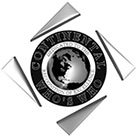Dangers at Home & Secondary Exposures
Mesothelioma is a rare, aggressive form of cancer that develops primarily in the lining of the lungs (pleura), of the abdomen (peritoneum) or of the heart (pericardium). To develop mesothelioma, one must come in contact with and inspire (breath in) asbestos, the only known cause. Mesothelioma has a long latency period and can take anywhere from 15 to 60 years after exposure develop. Men who worked in industries where asbestos was mined or milled, or in construction where asbestos was commonly incorporated into products, or in businesses that sold or distributed raw asbestos, historically have been the most likely to develop mesothelioma. Asbestos fibers are dangerous and can be a serious problem whenever they become airborne through activities and can be inspired. The amount or dose of asbestos fibers necessary to cause the disease is significantly less than other diseases or conditions that can occur after breathing in asbestos containing dust. At present, experts who have studied mesothelioma have never reached agreement on the threshold amount, if any, that someone must inspire to cause mesothelioma, but all agree that a very low dose can cause it.
Secondary or Bystander Exposure
The development of mesothelioma is not limited to persons who worked directly with asbestos or asbestos-containing products. Its victims have included “bystanders,” that is, persons who worked nearby or passed closely by someone who was working directly with asbestos or an asbestos-containing product. Anyone can be a bystander. The possibilities are myriad. For example, a bystander could be someone living in a town where large quantities of asbestos were mined, an office worker in an asbestos fabric weaving mill, a welder in a shipyard who worked nearby an insulator, a steelworker who worked near the relining of a furnace with asbestos-containing brick and insulation materials, or a construction worker like an electrician who worked near the installation of sheet rock or the application of asbestos-containing joint compound. Mesothelioma victims who developed the disease from bystander or secondary exposure can seek legal redress and hold manufacturers and sellers responsible.
Carry Home or Household Exposures
There are also instances where someone develops mesothelioma who never directly handled asbestos or an asbestos-containing product, or who was never a bystander or who never even at a place where asbestos was used. Typically, these individuals were exposed through contact with another person, someone who had direct contact with asbestos or who was a bystander. This type of contact is known as “carry home” or “household” exposure. It most-commonly occurs when a person is directly exposed to asbestos at his workplace and as such, carries asbestos particles home via his clothes, hair, and/or car, ultimately exposing his wife, children or loved ones to those fibers. Persons secondarily exposed in this way include persons who laundered work clothing laden with asbestos dust, or who hugged a loved one who was wearing asbestos-laden work clothing or who rode in a car contaminated by the dust sluffing from asbestos-laden work clothing. In all instances, the tiny asbestos fibers would become airborne and thereby easy to inhale, especially in a small enclosed space like a laundry room or automobile, where ventilation was likely to be poor.
The legal efficacy of carry home or household exposure claims is still in flux throughout the United States. Generally, such claims depend heavily on the specific facts of the case, including the nature and extent of the host’s exposure, and the time and circumstances of the claimant’s exposure to the host. Some states have accepted the concepts of foresee ability and duty to warn based on the specific facts of the case, while others have not. Nevertheless, there is no question that there are in fact victims who have developed mesothelioma from carry home or household exposure whose rights deserve to be evaluated.
Contact Stern Law, PLLC
At Stern Law, PLLC, we appreciate how difficult a mesothelioma diagnosis can be for you and your loved ones. You and your family member are going through an extremely difficult time, physically, emotionally and financially. If you or your loved one has been diagnosed with mesothelioma, we can help. For decades, we have successfully represented victims of mesothelioma, including persons who developed this disease from secondary exposure. We want to help you or your family you bring the companies responsible for the devastating situation to justice. . To schedule a free consultation, contact us at (844) 808-7529 to learn more about available legal rights and options, including trial and out-of-court claim opportunities. You or your loved ones may be entitled to significant compensation. We are ready to make a difference, so don’t wait – pick up the phone and call us now.













